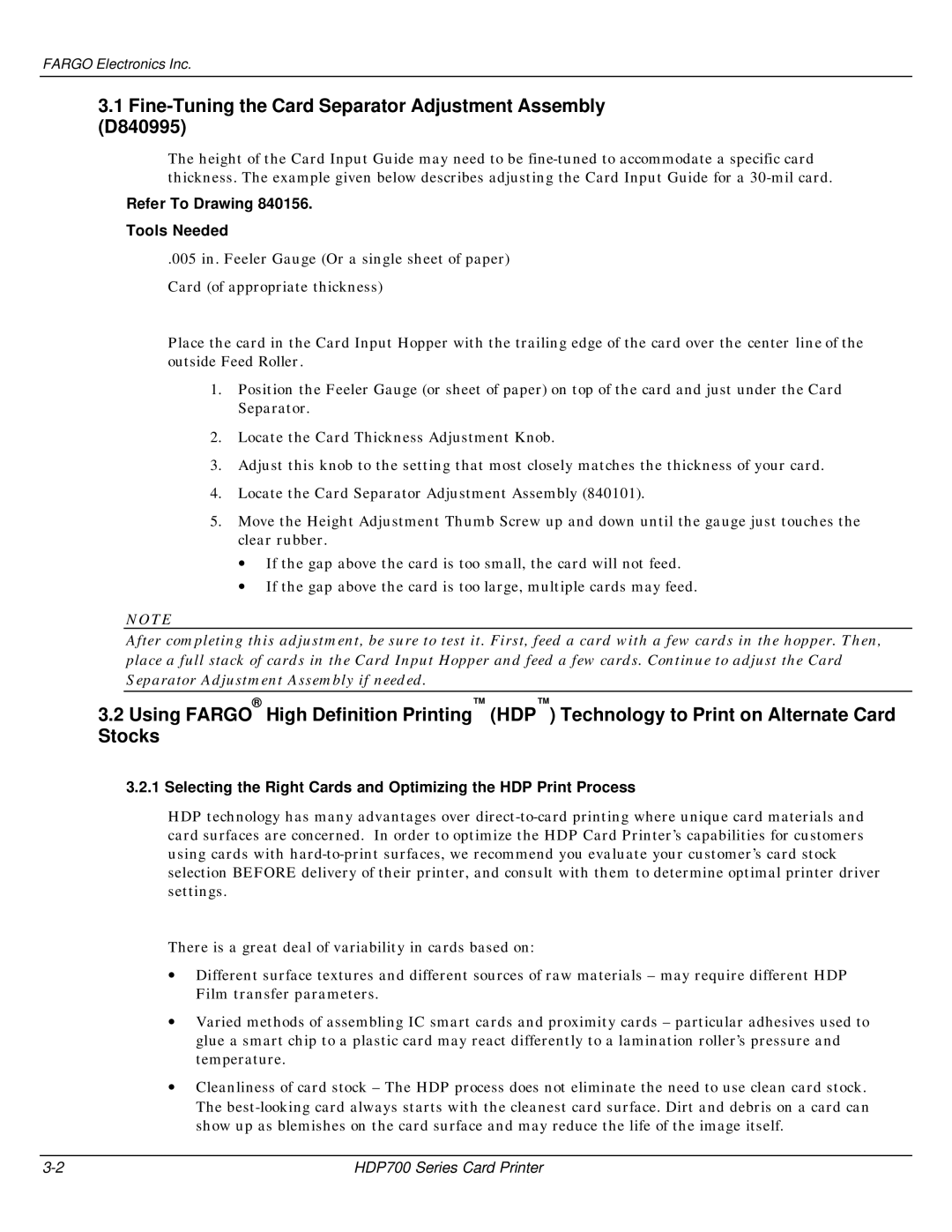
FARGO Electronics Inc.
3.1Fine-Tuning the Card Separator Adjustment Assembly (D840995)
The height of the Card Input Guide may need to be
Refer To Drawing 840156.
Tools Needed
.005 in. Feeler Gauge (Or a single sheet of paper)
Card (of appropriate thickness)
Place the card in the Card Input Hopper with the trailing edge of the card over the center line of the outside Feed Roller.
1.Position the Feeler Gauge (or sheet of paper) on top of the card and just under the Card Separator.
2.Locate the Card Thickness Adjustment Knob.
3.Adjust this knob to the setting that most closely matches the thickness of your card.
4.Locate the Card Separator Adjustment Assembly (840101).
5.Move the Height Adjustment Thumb Screw up and down until the gauge just touches the clear rubber.
∙If the gap above the card is too small, the card will not feed.
∙If the gap above the card is too large, multiple cards may feed.
NOTE
After completing this adjustment, be sure to test it. First, feed a card with a few cards in the hopper. Then, place a full stack of cards in the Card Input Hopper and feed a few cards. Continue to adjust the Card Separator Adjustment Assembly if needed.
3.2Using FARGO® High Definition Printing™ (HDP™) Technology to Print on Alternate Card Stocks
3.2.1 Selecting the Right Cards and Optimizing the HDP Print Process
HDP technology has many advantages over
There is a great deal of variability in cards based on:
∙Different surface textures and different sources of raw materials – may require different HDP Film transfer parameters.
∙Varied methods of assembling IC smart cards and proximity cards – particular adhesives used to glue a smart chip to a plastic card may react differently to a lamination roller’s pressure and temperature.
∙Cleanliness of card stock – The HDP process does not eliminate the need to use clean card stock. The
HDP700 Series Card Printer |
